Recommendation points
- Why do you need to insulate the blind area?
- In what cases insulation is not required?
- Is it possible to insulate a soft blind area?
- What width should the thermal protection be?
- What materials to use for insulation?
- Do I need to protect the insulation?
- Do I need a vertical heat protection belt?
- How to carry out earthworks correctly?
- Is it possible to lay insulation on open ground?
- How to properly fill the screed?
The blind area protects the foundation not only from erosion, it can also exclude the effects of frost heaving of the soil if it is insulated. Regarding the insulation of the blind area, a fairly large number of questions arise, which we will answer in our educational program.
Why do you need to insulate the blind area?
An uninsulated blind area protects the foundation from softening the soil under it, however, clay has the ability to accumulate moisture. In winter, when soil temperatures drop below zero, the clay expands, putting pressure on the foundation. The forces of both lateral and extruding frost heaving act, which causes the effect of twisting and bending loads on the foundation.
The device of the insulated blind area: 1 – shallow foundation; 2 – insulation of the foundation with EPS 50 mm; 3 – geotextile; 4 – sand bed; 5 – waterproofing; 6 – EPS 100 mm; 7 – reinforced concrete blind area; 8 – paving slabs; 9 – plinth finish
In most cases, frost heaving does not pose a threat to the structural integrity of the concrete structure. Nevertheless, the foundation has non-zero elasticity and is capable of deforming within certain limits. The problem is that the heaving of the soil is always uneven, which is why the reaction of the support takes on a concentrated character, bending the concrete base. In this case, the walls and decoration of the house are covered with cracks. If we limit the outflow of heat from the soil by placing a heat insulator under the blind area, the temperature of the soil near the foundation will be maintained positive, which excludes the destructive effect of frost heaving.
In what cases insulation is not required?
It makes no sense to construct an insulated blind area only for pile-grillage foundations, which are protected from the effects of frost heaving by other methods. In other cases, insulation is recommended for low and normally buried strip, slab foundations, and especially for houses with a prefabricated basement..
There are, however, a number of exceptions. For example, if the foundation rests on a soil layer located below the freezing depth, only lateral frost heaving forces will act on it, which can be neglected if the rigidity of the concrete structure is sufficiently high. However, if the basement floor is heated, overcooling the walls can cause condensation to form on them, which is why the insulation of the blind area is highly recommended.
Is it possible to insulate a soft blind area?
Bulk and paved blind areas that do not have sufficient rigidity can also be insulated. There is no difference in what is located above the insulation – a concrete screed, gravel embankment or a bulk substrate of paving slabs. It is only necessary to provide a sufficiently large thickness of the drainage layer to distribute the pressure on the insulation from the through loads. In most cases, the thickness of the shock-absorbing layer of 10-12 cm is sufficient.
When installing an insulated soft blind area, the main waterproofing is located on top of the insulation and is separated from it by a compacted layer of sifted sand. In this case, in cross-section, the thermal protection belt has an L-shaped profile and falls onto the wall of the drainage channel together with waterproofing.
What width should the thermal protection be?
The outflow of heat from the soil is carried out not only from the surface, but also through the colder adjacent soil layers. Therefore, the width of the thermal protection under the blind area is determined by the depth of soil freezing in a particular area. It also does not make sense to make the width of the thermal protection more than the width of the blind area required for effective water drainage.
The thermal protection belt must be of such a width that the distance from its edge to the bottom of the foundation exceeds the freezing depth. The exact value of the width can be obtained by squaring the freezing depth, subtracting from it the square of the height of the underground part of the foundation and extracting the root from the resulting value. At the same time, practice shows that it is irrational to make a heat protection belt wider than 120 cm, even if there is a basement floor..
What materials to use for insulation?
Only high-density extruded polystyrene foam (XPS) is suitable for insulating the blind area. It is simply irrational to use more expensive materials based on polyurethane or polyisocyanurate, in turn, cheap PSB foam tends to absorb moisture and lose its thermal insulation properties..
The minimum thickness of the insulation is 30 mm for the southern regions with an average temperature of a cold five-day period (CCT) not lower than -20 ° C and from 50 mm for regions with CCT to -28 ° C. In harsher climates, the insulation thickness should be close to 100 mm.
Do I need to protect the insulation?
Despite the fact that expanded polystyrene is protected from the weather by a blind area, it nevertheless needs protection. The greatest danger is posed by water, soil shifts, passing loads and a number of other factors..
Long-term operation of the insulation is ensured with such a layout, when there is a waterproofing in the form of a polyethylene film under it, and on top there is a concrete screed that has an overhang along the outer edge protecting the end of the thermal protection. In the case of a soft blind area, the function of a concrete ledge is performed by the tightly compacted material of the drainage channel.
Do I need a vertical heat protection belt?
Correct insulation of the blind area is not limited to the placement of thermal insulation under the concrete pavement; thermal protection should be combined with the vertical belt of the foundation insulation. This is necessary in order to exclude heat leakage through the concrete itself, which is characterized by high thermal conductivity..
Therefore, in parallel with the device for insulating the blind area, the plates of expanded polystyrene are fixed to the above-ground part of the foundation with glue and disc dowels, which are subsequently hidden under the finish of the basement. It is extremely important that the thermal protection of the foundation and blind area has a continuous circuit. The best option is when the horizontal belt is first laid, and then the basement insulation plates rest on it with the lower end.
How to carry out earthworks correctly?
When installing an insulated blind area, it is imperative to remove the top fertile layer of soil, in which insects and rodents can settle. Excavation of soil is carried out with a margin, adding to the actual width of the blind area an additional 10-15 cm, which are necessary for the correct arrangement of gravel bedding.
The minimum excavation depth is 150 mm, while it should be borne in mind that the surface of the finished blind area should rise above the adjacent soil at least 5 cm.To reduce the cost of concrete and bulk material, the bottom of the pit chosen for the blind area can be raised with an adobe bed.
Is it possible to lay insulation on open ground?
Despite the rather high strength and elasticity of expanded polystyrene, it should be laid only on a leveled and prepared surface. Otherwise, due to subsidence of the soil, the plates can bend and even collapse, which will lead to an increase in the thermal conductivity of the entire cake..
In the best case, a substrate of 30-50 cm of compacted and leveled sand, carefully spilled with water, is prepared for insulation. To exclude erosion of the bedding, the sand is separated from the soil with one layer of needle-punched geotextile.
How to properly fill the screed?
When screed is poured over XPS boards, it is possible for the separated liquid to seep between the EPS boards, which will lead to their displacement or even floating. It is not enough just to lay the insulation on the ground, it must be carefully adjusted at the joints, immobilized and waterproofed.
All elements of the thermal protection belt must be carefully fitted to each other without the formation of gaps. Temporarily, the insulation is attached to the ground with knitting needles made of 4 mm wire, bent in the shape of the letter “L”, in an amount of at least 3 pcs. on the stove. Next, a plastic film should be rolled out over the insulation, after which you can start pouring concrete.

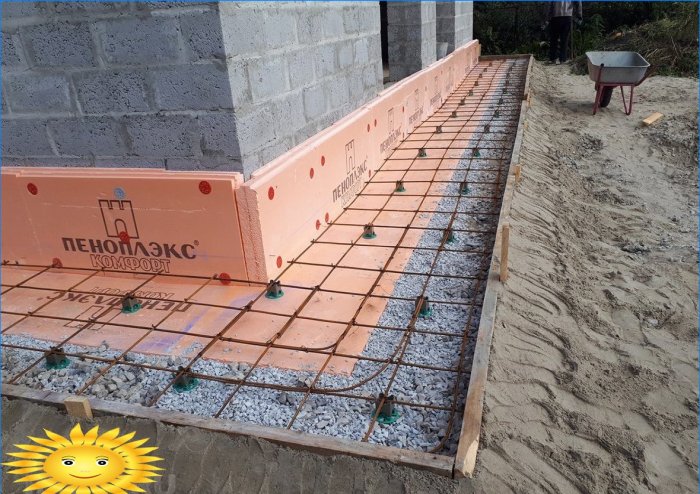
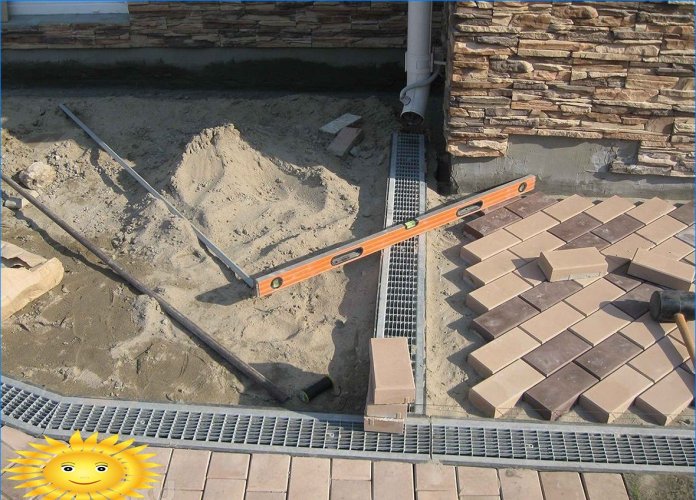



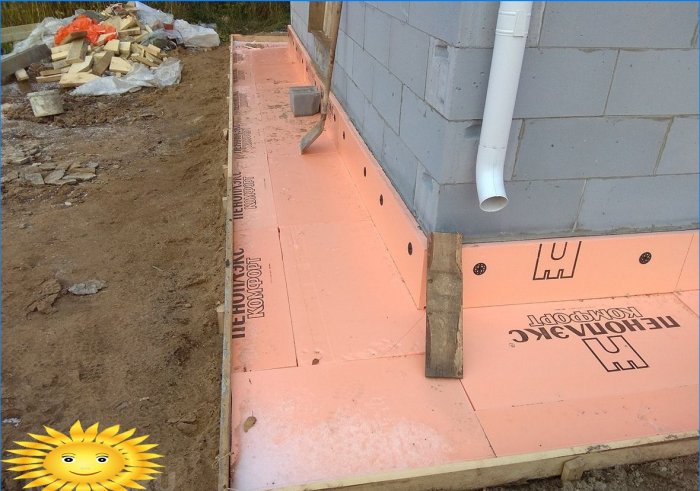
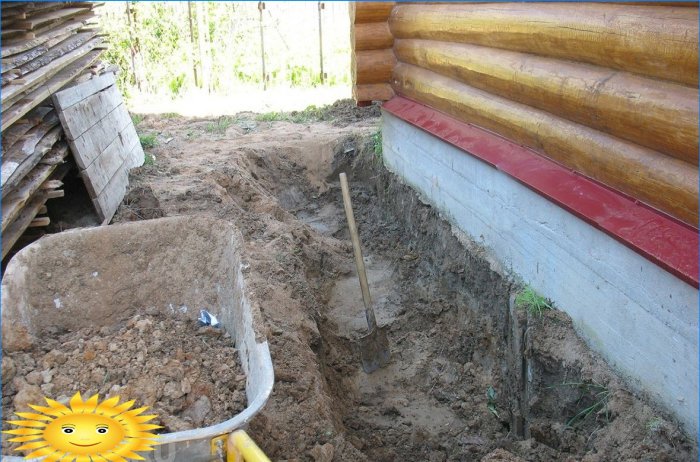
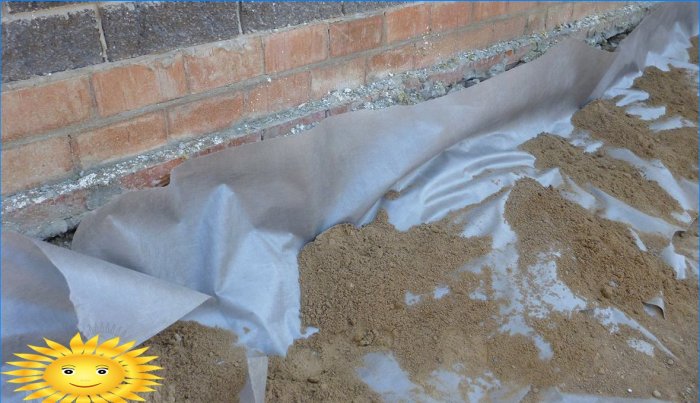
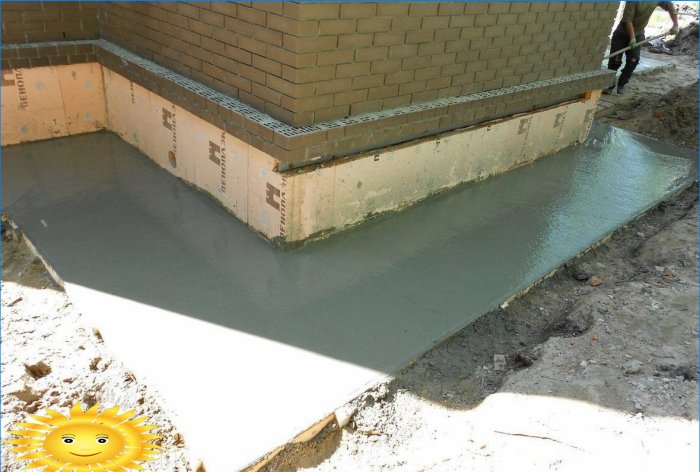
Can anyone recommend effective methods for insulating the blind areas in a home? I’m particularly interested in learning about practical solutions or techniques that have been proven to reduce heat loss, improve energy efficiency, and increase overall comfort. Any tips or advice would be greatly appreciated!
One effective method for insulating blind areas in a home is to use draft stoppers or door snakes to block cold air from entering the room. Weatherstripping can also be installed around windows and doors to prevent heat loss. Adding curtains or blinds to windows can provide an extra layer of insulation and help control temperature. Another effective solution is to insulate the walls and ceilings of the home with materials such as foam board or fiberglass insulation. Additionally, sealing cracks and gaps in the walls, floors, and ceilings can help keep cold air out and warm air in. Proper maintenance of heating and cooling systems, as well as regular inspection of insulation, can also contribute to improved energy efficiency and overall comfort in the home.
One effective method for insulating blind areas in a home is using weather stripping or caulk to seal any gaps or cracks around windows and doors. This helps prevent heat loss and drafts. Installing thick curtains or blinds can also provide an extra layer of insulation. Adding rugs or carpets to cold floors can help retain heat and increase comfort. Insulating blinds or shades can also help reduce heat loss. Additionally, applying insulation to walls, ceilings, and floors can greatly improve energy efficiency. Regularly checking and maintaining insulation in the attic and crawl spaces is also important. Overall, a combination of these practical solutions can effectively reduce heat loss and improve the comfort of your home.